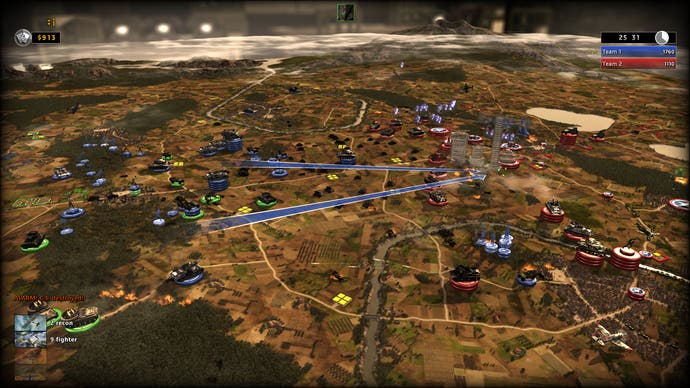R.U.S.E.
Command and console.
Despite some notable successes, it still doesn't feel like RTS has made a clean transition from PC to console. Bridging the gulf between input methods has always been a massive challenge. The nature of control offered by the keyboard-and-mouse combo is pretty much hardwired into the genre's DNA, and that's something of a ball and chain.
The comfortable remapping of even that simplest of commands - group unit selection - to the welcoming arms of the twin-stick joypad has enjoyed varying degrees of success down the years. Staggeringly, it still feels like nobody's really cracked the interface problem. At least, not well enough to offer a properly fluid sense of battlefield control, where the creation and management of vast armies is a breeze and the very process of waging war isn't a constant barrier to the desired result.
That's your opponent's job, after all. Until some clever-clogs has a mental cabinet-reshuffle on the matter, and builds the experience around the tools, it's going to carry on being a sticky issue.
Reshuffle ahoy! And it's high time. You barely notice RUSE's physical interface at all. Just seconds in, you're flitting around WWII maps in all their richly-detailed glory, with a sexy abandon unbecoming a high-ranking military figure. With zoom and pan on the right stick, and movement on the left, it's as comfy and familiar as an FPS, and gives you an airy sense of freedom that, frankly, is a first for console RTS.

Point the camera near a unit and the engine offers you the choice of selecting it, or all units of that type in the area. This makes pernickity precision, the preserve of the mouse, no kind of issue. After a little time spent with the PC beta as well, it's plain to see that the PC version suffers not a jot from this joypad-friendly interface.
Zoom the camera out a bit and the visual representation of those units changes from individual models to chip-stacks which describe light, heavy and air units with their differing size and shape. Zoom out further and it bundles these chips together into pleasing mega-stacks, which can be ordered to move as a whole.
Issuing mass-movement commands, therefore, is more about rescaling your viewpoint. With a single swipe of the thumb you've a commanding view of the distribution of arms across the entire map. It's empowering. It's easy.
And the nuances of the engine prove that accessibility can be about intelligent design and user-friendliness, and not, as the rest of RUSE's experience happily reiterates, about dumbing down the gameplay and flashing some boob. Developer Eugen's IRISZOOM engine gives you first-class battlefield intelligence.

Or does it? Not if your opponent has a say. Which of course, he does, the blighter. While at any point you can see your enemy's entire force deployment in the form of mobile stacks, the nature of the units themselves is hidden from you until you get a unit within line-of-sight. This important distinction between generalities and details, and ultimately the exploitation of that distinction, forms the basis of RUSE's way of war, and explains the thinking behind its title.
Each battlefield is delineated into a number of sectors and at any stage you can employ one of ten distinct 'ruses' in any given sector. These ruses improve your battlefield intelligence or disrupt your opponent's, and can swing the balance of a conflict quite considerably.

